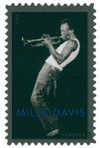
# 4693 - 2012 First-Class Forever Stamp - Miles Davis
Birth of Miles Davis
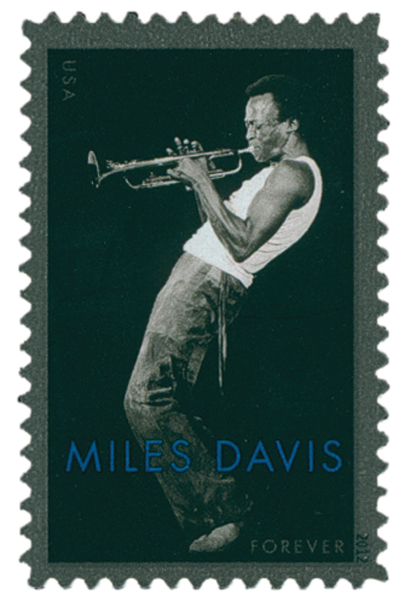
Musician Miles Dewey Davis III was born on May 26, 1926, in Alton, Illinois. By continually reinventing his technique, Davis became one of the most influential jazz musicians of all time. In a career spanning 50 years, he left his fingerprint on every major development in jazz since the 1940s.
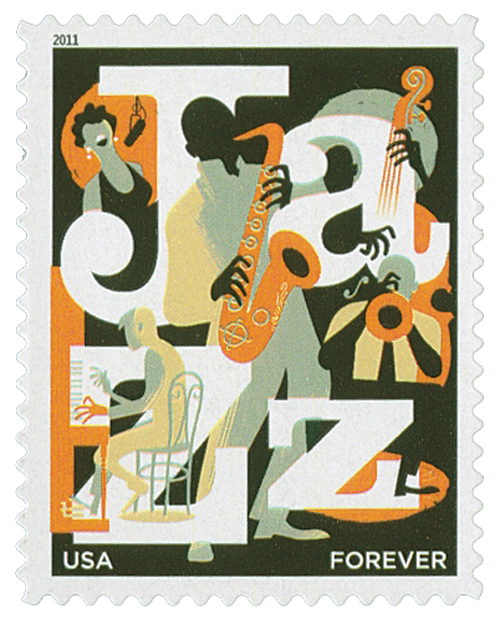
Davis enjoyed music from an early age, drawn to blues, big bands, and gospel. He got his first trumpet in 1935 and took lessons from Elwood Buchanan, a patient from his father’s dentist office. By the time he was 12, Davis said music was the most important thing in his life. He started playing in local bands and joined his high school’s marching band. Davis also became intensely interested in music theory, searching for any books he could find on the subject.
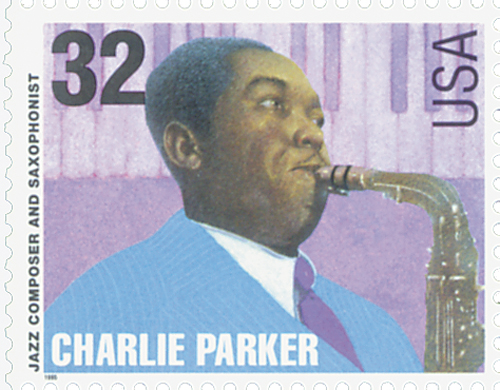
Davis joined the Rhumboogie Orchestra (also known as the Blue Devils) to fill a vacant seat. While still in high school, he became the group’s musical director and later stated that this had been one of the most important jobs of his career. In 1944, Davis joined Billy Eckstine, Art Blakey, Dizzy Gillespie, and Charlie Parker in a two-week stint at Club Riviera. The experience convinced him that he should go to New York City “where the action was.”
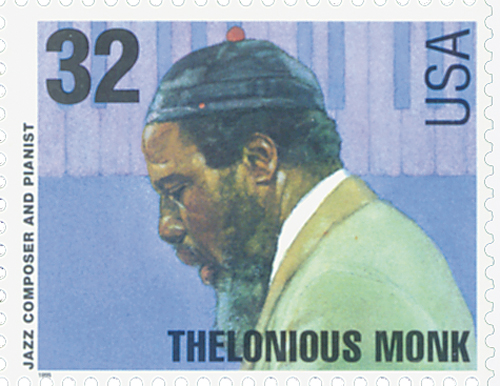
Davis went to New York in 1944 and attended the Institute of Music Arts (later known as the Juilliard School of Music), where he studied music theory, piano, and dictation. However, he frequently skipped classes, searching the clubs for his idol, Charlie Parker. Once he found Parker, he was invited to become a regular at popular Harlem clubs. There, he participated in nightly jam sessions that sometimes included J.J. Johnson, Kenny Clarke, Thelonius Monk, Fats Navarro, and Freddie Webster.
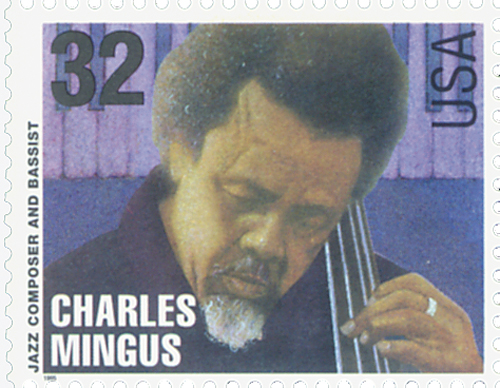
Davis dropped out of school after three semesters to focus on performing full-time. He found his niche playing jam sessions in Harlem nightclubs. Adding a relaxed, melodic approach to bebop, Davis introduced the “cool jazz” movement with his 1957 album, Birth of the Cool.
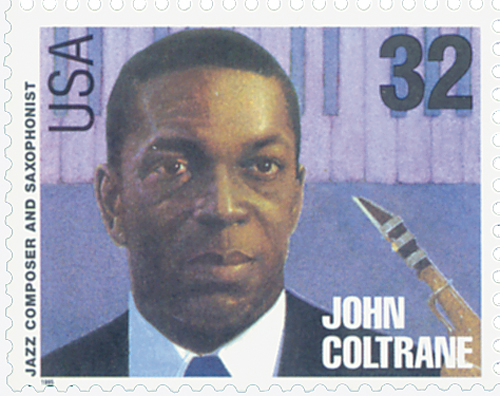
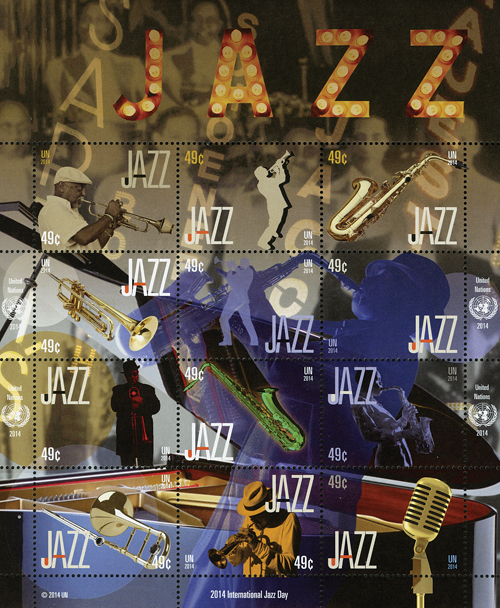
Davis’s “Hard Bop” period coincided with a tour in Paris, where he enjoyed more respect than black musicians experienced in the US. In 1959, his Kind of Blue was recorded. The album became the best-selling jazz record of all time and was proclaimed a national treasure by the US House of Representatives. Davis experimented with electric instruments, jazz fusion, and funk until the 70s, when he began to suffer health issues so severe that Rolling Stone magazine reported he was on his deathbed.
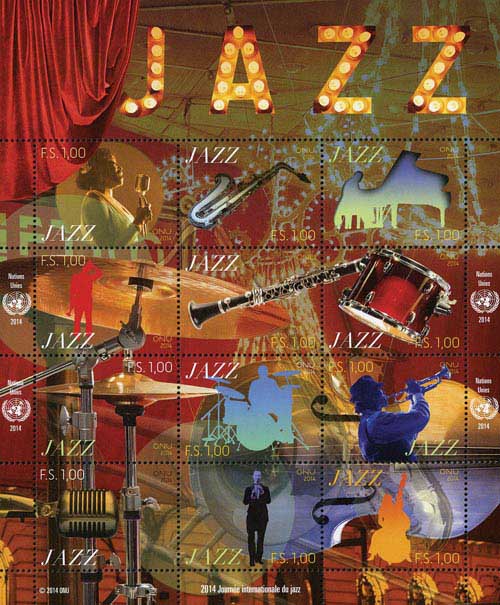
Davis rallied, rekindled his romance with actress Cicely Tyson, and conquered a drug addiction. Released in 1986, his album Tutu won a Grammy, which was followed by a Lifetime Achievement Award in 1990. This was the most commercially successful period of his career, with sold-out concerts around the world and projects in the visual arts, film, and television. Davis suffered a stroke and died on September 28, 1991. He was inducted into the Rock and Roll Hall of Fame in 2006 as “one of the key figures in the history of Jazz.” He’s also been called “the most revered jazz trumpeter of all time” and “inarguably one of the most influential and innovative musicians” of the 20th century.
Birth of Miles Davis

Musician Miles Dewey Davis III was born on May 26, 1926, in Alton, Illinois. By continually reinventing his technique, Davis became one of the most influential jazz musicians of all time. In a career spanning 50 years, he left his fingerprint on every major development in jazz since the 1940s.

Davis enjoyed music from an early age, drawn to blues, big bands, and gospel. He got his first trumpet in 1935 and took lessons from Elwood Buchanan, a patient from his father’s dentist office. By the time he was 12, Davis said music was the most important thing in his life. He started playing in local bands and joined his high school’s marching band. Davis also became intensely interested in music theory, searching for any books he could find on the subject.

Davis joined the Rhumboogie Orchestra (also known as the Blue Devils) to fill a vacant seat. While still in high school, he became the group’s musical director and later stated that this had been one of the most important jobs of his career. In 1944, Davis joined Billy Eckstine, Art Blakey, Dizzy Gillespie, and Charlie Parker in a two-week stint at Club Riviera. The experience convinced him that he should go to New York City “where the action was.”

Davis went to New York in 1944 and attended the Institute of Music Arts (later known as the Juilliard School of Music), where he studied music theory, piano, and dictation. However, he frequently skipped classes, searching the clubs for his idol, Charlie Parker. Once he found Parker, he was invited to become a regular at popular Harlem clubs. There, he participated in nightly jam sessions that sometimes included J.J. Johnson, Kenny Clarke, Thelonius Monk, Fats Navarro, and Freddie Webster.

Davis dropped out of school after three semesters to focus on performing full-time. He found his niche playing jam sessions in Harlem nightclubs. Adding a relaxed, melodic approach to bebop, Davis introduced the “cool jazz” movement with his 1957 album, Birth of the Cool.


Davis’s “Hard Bop” period coincided with a tour in Paris, where he enjoyed more respect than black musicians experienced in the US. In 1959, his Kind of Blue was recorded. The album became the best-selling jazz record of all time and was proclaimed a national treasure by the US House of Representatives. Davis experimented with electric instruments, jazz fusion, and funk until the 70s, when he began to suffer health issues so severe that Rolling Stone magazine reported he was on his deathbed.

Davis rallied, rekindled his romance with actress Cicely Tyson, and conquered a drug addiction. Released in 1986, his album Tutu won a Grammy, which was followed by a Lifetime Achievement Award in 1990. This was the most commercially successful period of his career, with sold-out concerts around the world and projects in the visual arts, film, and television. Davis suffered a stroke and died on September 28, 1991. He was inducted into the Rock and Roll Hall of Fame in 2006 as “one of the key figures in the history of Jazz.” He’s also been called “the most revered jazz trumpeter of all time” and “inarguably one of the most influential and innovative musicians” of the 20th century.




